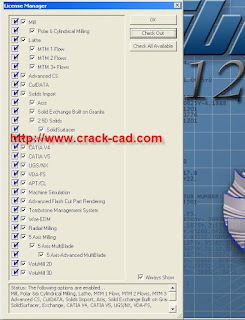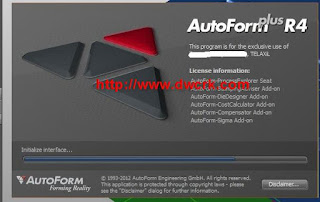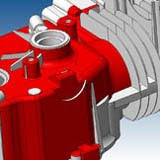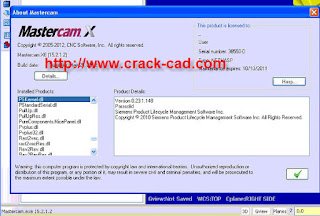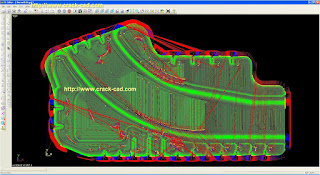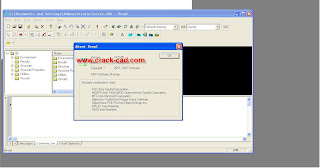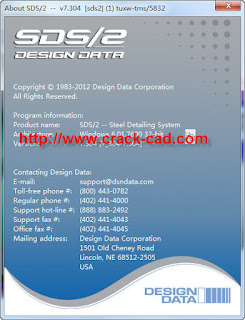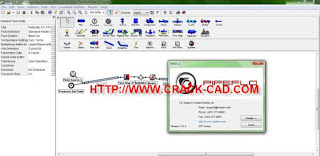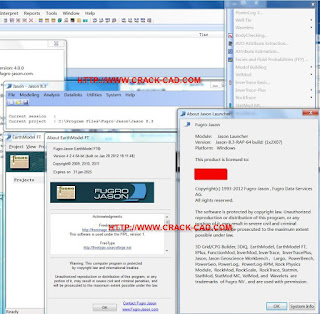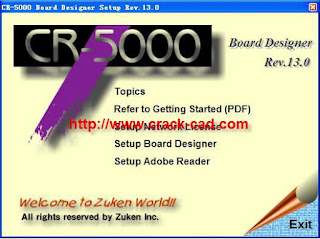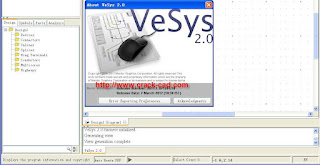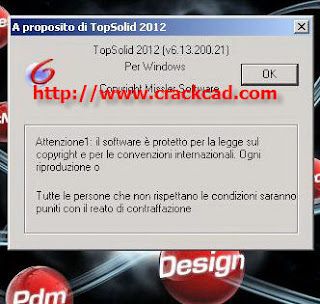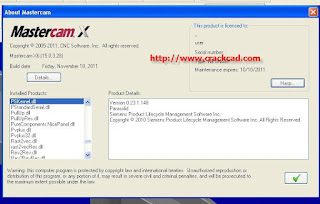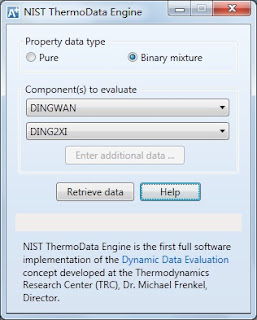2012-11-13
Zemax_2012_v12_for_64_bit
Zemax 12 Release 2 is the most capable optical and illumination design software
ever published.
Zemax 12 is the perfect tool to design, optimize, and tolerance optical systems. Your system may include refractive, reflective, diffractive, sequential, or non-sequential elements in any combination.
Zemax 12 is available in three editions: Zemax IE, Zemax EE and Zemax SE. Compare them here.
You can use Zemax for
classical lens design, including powerful optimization and tolerancing
illumination and stray light, using fully unconstrained non-sequential ray-tracing
laser beam propagation, using powerful physical optics modelling
All of these powerful features are integrated into an intuitive user interface. Zemax offers power, speed, flexibility, ease of use, and value in one comprehensive program.
Zemax is the perfect tool to design, optimize, and tolerance optical systems. Your system may include refractive, reflective, diffractive, sequential, or
non-sequential elements in any combination.
You can use Zemax for
classical lens design, including powerful optimization and tolerancing
illumination and stray light, using fully unconstrained non-sequential ray-tracing
laser beam propagation, using powerful physical optics modelling
All of these powerful features are integrated into an intuitive user interface. Zemax offers power, speed, flexibility, ease of use, and value in one comprehensive program.
2012-11-09
ucam_v10_crack_download
Ucamco have now released UCAM Version 10, making Visual HyperScripts more powerful and even easier to set up. New commands extend Visual HyperScripting to automate data preparation for electrical test. New functionality based on the feedback from users makes it easier to start scripting and to share scripts across a company. At the same time Ucamco have put a short training video on their website which shows how Visual HyperScripts cut CAM time and how to start to use it.
Flexible circuitry and Tape Automatic
Bonding (TAB) is the fastest growing area
of PCB fabrication, but it brings special
production challenges. Developments
which brought high yields and high
productivity for rigid boards need to be
rethought. Increasingly complex and
increasingly diverse build structures, new
materials and new technologies impose
new demands on CAM, design verification,
yield optimization and tool generation.
Many earlier automation technologies are
now ineffective.
The Solution
Ucamco’s new UCAM UFLEX software has
been launched in response these
challenges. Powerful tool-sets help product
engineers develop innovative and effective
solutions for cutting-edge designs, while
highly flexible automation routines take
care of the repetitive and time-consuming
manual tasks which hamper engineering
creativity.
DFR – Design for Reliability
Tebis_v3.5 _download_crack
Tebis (Technische Entwicklung Beratung und Individuelle Software) is a CAD/CAM program supplied by Tebis Technische Informationssysteme AG headquartered in Martinsried near Munich/Germany.
Functionality
Tebis v3.5 is a CAD/CAM software solution for applications such as die, mold or model making. The software is primarily used in the generation of toolpaths for chip-breaking manufacturing such as drilling and milling, but also in Wire EDM and Electrode EDM. These toolpaths control multi-axis CNC machines. Other applications include manufacturing planning, design, reverse engineering, quality assurance, CNC machining and assembly. The software features interfaces for neutral file formats as well as proprietary formats of third-party manufacturers (STEP 203/214, VDAFS, IGES, DXF, STL, Parasolid, Catia V4/V5, ProE, SolidWorks, NX).
Tebis offers a number of different CAD upgrade options. Six different CAD modules can be added to the Tebis Base, already including wire frame model design:
Surface Design
Advanced Surface Design
Digitized Data Processing
Faro integration
Qualifier – Evaluating surface models
Surfacer – Improving surface models
Reverser – Generating design surfaces
Healer – Repairing design surfaces
Optimizer – Class A level surfaces
Morpher – Deforming surface models
Electrode Design
Feature Design
These options let you configure your CAD/CAM workstations to meet the needs of the application at hand. You can also choose from a number of geometry interfaces to meet your particular requirements and thus be compatible with everyone involved in the manufacturing process.
Structure tree
See at a glance whether a layer has subordinate layers and whether these contain elements. Thanks to the new symbols you will be able to recognize structures much faster.
JT interface
The new JT interface expands the spectrum of data that can be imported in Tebis. The import of this open data format which is proposed but not yet ISO standardized is now possible without work-arounds and loss of data.
Splitting topologies
We completely revised the TOP/REMOVE function. You can split topologies in the shortest time possible: simply drag selected objects from the topology and maintain the overview. Use colors or tangentiality to expand your selection, and, at the same time, lock it for flat or steep areas. You can use the same method to remove objects from your selection. Store your selected objects as a new topology. Regardless the size of the part, you can quickly split it for design or manufacturing.
Closing cavities
Filling holes or closing cavities – no problem with the new FILL function. Use neighboring surfaces to create fill surfaces for areas with four or more boundary curves. An analysis indicates in real time whether your selected strategy is suitable for these fill areas. And as a last resort, you can quickly add a few connecting curves. All of this within the same function.
Deep-hole drilling features
Create deep-hole drilling features: Select a blank, select features, and you are done. Features are extended, given a spot facing, a counterbore, or a pilot depth – everything happens automatically.
Morpher
Use the new deformation rule ROT (ROTatory deformation). With this function, you rotate the surfaces instead of shifting them, for example, when folding out a flange. Select the geometry to be deformed, specify the deformation target, check using the distance analysis, and you are done. There are just three steps to a deformation – and all of them without hassles.
Overall tool set
Are you used to programming several machining operations and the same number of tool sets? This is a thing of the past, because you can now specify a single
2012-10-06
Garrad_Hassan_GH_Bladed_V4.1
GH-Bladed download provides worldwide wind turbine and component manufacturers, certification agencies, design consultants and research organisations with a design tool that has been extensively validated against measured data from a wide range of turbines. It enables users to conduct the full range of performance and loading calculations. With a Windows-based user interface, it supports calculations of combined wind and wave loading, with full aeroelastic and hydroelastic modelling. It has been validated by Germanischer Lloyd for the calculation of wind turbines loads for design and certification.
Multibody structural dynamics
Bladed utilises a new, completely self-consistent and rigorous formulation of the structural dynamics. This provides consistently reliable and accurate results and forms a solid foundation from which to continue to extend the structural model with features as part of the ongoing development programme.
Turbine Definition
The main toolbar gives access to data entry screens which allow the various turbine components to be defined, including:
Rotor
Blades
Drive Train
Generator & Electrical
Control
Tower & Nacelle
Bladed Modules
In addition to the core base module, Bladed has several specialist bolt-on modules covering steady state analysis, dynamic load simulations, analysis of loads and energy capture, batch processing and automated report generation, interaction with the electrical network, and model linearisation for control design. Related information sheets can be downloaded at the bottom right of this page.
Wind Field Model
Bladed includes comprehensive models of the complex wind fields which can excite the turbine.
3-dimensional, 3-component models of atmospheric turbulence
Various turbulence spectra and coherence models
Transients in wind speed, direction, and shear as specified in the design standards
Wind shear (exponential or logarithmic models)
Upflow
Tower shadow, upwind and downwind
Eddy viscosity model of upwind turbine wake
2012-09-27
GibbsCAM_2012_v10.3.7_download
GibbsCAM 2012 Production Milling supports 2-axis through simple 3-axis wireframe machining with full functionality for contouring, pocketing with unlimited bosses/islands, thread milling, face milling, 2D/3D spiral creation, drilling with support for many drill cycles, tapping, and boring. Simple 4th-axis positioning is also supported. Automatic cycles for face milling, such as spiral, zig-zag, back and forth and one direction, allow material to be cleaned off the top of a part. GibbsCAM Production Milling provides easy-to-use, powerful programming capability for your machine tools.
Gibbs and Associates, developer of GibbsCAM 2012 software for programming CNC machine tools and a Cimatron (NASDAQ: CIMT) company, today announced its leadership role in supporting phase one of the DMG/Mori Seiki standardization initiative. It will ultimately provide DMG/Mori Seiki customers a smooth and reliable flow of programming data from any CAM system to DMG/Mori Seiki machine controls. This will enable the full use of the features of their machines and controls without the need for custom post-processors or machine simulation models. The technology is based upon DMG/Mori Seiki’s implementation of the standard APT (automatically programmed tool) language, with DMG/Mori Seiki extensions that are supported within GibbsCAM. DMG/Mori Seiki’s initial focus during phase one is on its 3- to 5-axis machining centers and controls, with an ultimate goal of enabling the technology for all of its machines, including the most challenging multi-task machines. As new machines and machine functions are introduced, DMG/Mori Seiki and Gibbs will incorporate the new capabilities into their APT implementation.
GibbsCAM to Support Multiple Machine Tool Builders at IMTS
Parts to be Programmed with GibbsCAM 2012+ and Live Personal Demonstrations
Moorpark, CA - August 27, 2012
Gibbs and Associates, developer of GibbsCAM® software for programming CNC machine tools and a Cimatron (NASDAQ: CIMT) company, today announced that it will support various machine tool companies with its GibbsCAM 2012+ NC programming software at the International Machine Technology Show (IMTS 2012), September 10-15, 2012, at McCormick Place, Chicago. Some machine tool builders will be machining parts programmed with GibbsCAM, while others will also host GibbsCAM demonstrations, highlighting the software’s latest capabilities and its leadership in programming high-speed machining and multi-task and multi-axis machines. GibbsCAM 2012+ includes new features and enhancements across the product line, with a continued emphasis on ease of use, so that customers can achieve the highest speed, accuracy, efficiency and reliability in programming. In addition to supporting machine tool partners, GibbsCAM will have its own exhibit in Booth E-3310.
Autoform_plus_r4_download
AutoForm plus r4-Incrementalplus
Rapid and Accurate Simulation and Validation of the Complete Stamping Process
AutoForm-ThermoSolver
AutoForm-ThermoSolver
Efficient Simulation of Hot Forming and Quenching Processes
AutoForm-DieDesigner
AutoForm-DieDesigner
3D-Die-Layout and Process Optimization
AutoForm-Sigma
AutoForm-Sigma
Sensitivity Analysis, Optimization and Robustness
AutoForm-Compensator
AutoForm-Compensator
Geometry Compensation of Part and Tool Based on Springback Results
AutoForm-Trim
AutoForm-Trim
Automatic Determination of Optimum Trim Line and Blank Outline
AutoForm-ProcessPlanner
AutoForm-ProcessPlanner
Effective Process Planning
AutoForm-CostCalculator
AutoForm-CostCalculator
Rapid Production Sequence Definition with Sophisticated Tool Cost Calculation
AutoForm-BlankDesigner
AutoForm-BlankDesigner
Rapid Design of Cost-Optimized Blanks
AutoForm-Nest
AutoForm-Nest
Cost-Optimized Nesting of Blanks
AutoForm-OneStep
AutoForm-OneStep
Engineering Manufacturable Sheet Metal Parts
AutoForm-PartDesigner
AutoForm-PartDesigner
Easy and Rapid Part Modifications
AutoForm-DieAdviser
AutoForm-DieAdviser
Optimal Wear Protection
AutoForm Hydroforming
AutoForm Hydroforming
Rapid Analysis and Simulation of Entire Hydroforming Design Chain
AutoForm-DataManager
AutoForm-DataManager
Efficient Management of AutoForm Data
AutoForm-ReportManager
AutoForm-ReportManager
Creating Presentation Reports of AutoForm Results
AutoForm-HemPlanner
AutoForm-HemPlanner
Efficient Planning of Hemming Processes
AutoForm-ProcessDesigner^forCATIA
AutoForm-ProcessDesignerforCATIA
Rapid Creation of CAD Quality Die Faces
AutoForm-OneStep^forCATIA
AutoForm-OneStepforCATIA
OneStep Feasibility Assessment inside CATIA
AutoForm-CATIA5
AutoForm-CATIA5
Direct Integration of AutoForm Software in CATIA V5
AutoForm-NX
AutoForm plus r4 p-NX
Direct Integration of AutoForm Software in NX
EasyBlank Inventor
EasyBlank Inventor
Analysis of Stamped Parts Embedded within Autodesk® Inventor® Software
EasyBlank
EasyBlank
MatForm
MatForm
AutoForm-Sigma®
Software for Sensitivity Analysis, Optimization and Robustness
The AutoForm-Sigma software module is specialized for analyzing and improving the robustness of sheet metal products and processes. It serves to improve and validate the forming process, and to reduce or eliminate part rejects.
With AutoForm-Sigma, products and processes can be designed so that the resulting manufacturing process is most efficient and stable while meeting desired quality targets. The influence and sensitivity of design parameters are easily analyzed which leads to improved process know-how and shorter development times. In addition, statistical process control techniques can already be applied in the design phase, taking into account the noise and variability that are inherent in the forming process. Therefore, sheet metal formers can address and solve key manufacturing problems much before going into production, with obvious advantages.
AutoForm-Sigma provides the following benefits:
Shorter development and tryout times -
because the forming process becomes more transparent and process know-how is improved
More stable manufacturing processes during the entire production cycle -
through identification of the process window
Less plant downtime, fewer tool adjustments and fewer part defects -
because of more robust manufacturing processes
More robust manufacturing processes -
through quality and process capability analyses
AutoForm-Sigma is fully integrated into the AutoForm work environment. Unique on the market, it automatically analyzes and displays the results (e.g. influence, sensitivity, process capability Cpk) directly on the parts – no time consuming investigations of abstract numbers and diagrams are needed any more. No other software offers this new methodology which can be used by die face designers and engineers, without requiring years of specialized expertise.
AutoForm-Sigma’s main features include:
Easy definition of design parameters
Automatic start of multiple simulations
Statistical techniques pre-defined and ready for user application
Identification of dominant design parameters
Determination of influence and sensitivity of design parameters
Automated process optimization
Determination of noise and variability of process parameters
Integration of Statistical Process Control (SPC) and simulation
Identification of process window
2012-09-11
Moldex3D-R11-download
Moldex3D is a suite of professional CAE tools that enable more accurate and more efficient plastic part verification and mold optimization. It helps global designers create better products to meet market demands. It also helps manufacturers produce high-quality plastic parts at lower cost. Moldex3D leads users to overcome severe industrial challenges and strengthen core competitiveness.
Moldex3D R11.0 brings several breakthroughs on solver enhancement and user friendliness. It now provides the most complete industrial processing simulations, including advanced hot runner optimization, co-injection molding, microcellular molding, underfill encapsulation, etc. It also continues improving pre-processing and post-processing functionalities that help users acquire optimal solutions more easily and more efficiently.
Moldex3D R11.0 builds its outstanding capabilities on past releases and adds innovation for better performance and user experience, offering the following new features and benefits:
Advanced Support for Pre-Processor
Accuracy Improvements for Simulations
Enhanced Efficiency for Simulations
New Simulation Capabilities
Material Database Updates
High Performance Computing
Advanced Support for Pre-Processor
Moldex3D R11.0 has improved its exclusive pre-processors, Moldex3D Mesh and Designer, to help users avoid most difficulties in the pre-processing preparation.
Quality Improvements in Moldex3D Mesh
Moldex3D Mesh highly improves the quality of solid mesh and surface mesh. Aimed to circular features, the meshing processor will assign at least six node seeds automatically in a circular region, which means a better node density distribution to describe a circular feature. It will avoid common geometric distortion in circular surface mesh and bring more accurate simulations.
A specific geometric feature can be perfectly portrayed
An enhanced function has also been added for users to find a region with small edge length on one mesh edge. Users can setup ideal minimum edge length to identify disqualified surface elements for further improvements. It will help users enhance mesh quality.
Features and Enhancements in Designer
Moldex3D Designer develops several new features:
Enables users to directly modify local geometric thickness on a 3D model. It is more efficient for users to run simulations for thickness changes.
Provides a user-friendly tool to draw an arc curve and attribute it as a runner or a cooling channel. It allows users to design feeding or cooling systems depending on individual needs.
Supports to import 3D models of cooling channels in STL format directly from CAD software. Users can build up complex cooling systems more easily.
Users can create a complex cooling system in STL
Enhances the meshing performance especially for models with large runner volume. Its function of auto grid distribution will automatically distribute more elements in cavities than that in runner. It will lead to an increase on mesh and result resolutions in critical regions.
Supports to specify symmetric settings of models
JMAG-Designer-v11.1-download
JMAG-Designer is a simulation software for electromechanical design striving to be easy to use while providing versatility to support users from conceptual design to comprehensive analyses
Electrical Machine Design
(IPM, SPM, SR, Spindle, Induction, Stepper Motor, Alternator...)
Basic Characterstics Analysis
(N-T Analysis, Torque Ripple Analysis)
Inductance Calculation,
Efficiency Analysis
Magnetization, Demagnetization, Eccentricity Analysis
Loss Analysis
(Iron Loss, Eddy Current Analysis)
Thermal Analysis
Structural Analysis
(Stress, Centrifugal Force, Sound Pressure Analysis)
Transformer / Reactor Design
Basic Characteristics Analysis
Structural Analysis
(Sound Pressure)
Loss Analysis
Thermal Analysis
Busbar Design
Current Distribution
Inductance Claculation
Thermal Analysis
Structural Analysis
Induction Heating Analysis
(Printer Roller, Inductance Frunace, Gear,
Cooking Heater, Drive Shaft, Crankshaft...)
Eddy Current Density
Distribution
Joule Loss Density Distribution
Temperature Distribution
and Variation
Vero_ViSi_ 20.0_cracked
VISI v20 q2 is acknowledged as one of the world's leading PC based CAD / CAM solutions for the Mould & Die industries. It offers a unique combination of applications, fully integrated wireframe, surface and solid modelling, comprehensive 2D, 3D and 5 axis machining strategies with dedicated high speed routines. Industry specific applications for plastic injection tool design including material flow analysis and progressive die design with step-by-step unfolding provide the toolmaker with unsurpassed levels of productivity.
Vero Software offers dedicated solutions that eliminate the links between varying software suppliers and the solid-to-surface or CAD / CAM geometry conversions required by traditional systems.
VISI Modelling
Advanced CADCAM Software Solutions For The Manufacturing Industry
VISI Modelling is the foundation of all VISI products and provides a robust and powerful solid and surface modelling system based around the industry standard Parasolid® kernel. Combined with Vero’s surface technology, model analysis and 2D design, VISI Modelling offers complete flexibility to construct, edit or repair the most complex 3D data.
Features at a glance:
Easy to learn intuitive interface
Extensive CAD interfaces
Industry standard Parasolid® kernel
Combined wireframe, solid & surface modelling
Solid & surface boolean operations
Surface repair & analysis
Edge tolerance manipulation
Powerful blending
Intelligent model deformation
Fast rendering & texture mapping
Mechanical curve construction
Associative tool detailing
Automatic B.O.M. creation
Extensive range of CAD interfaces. VISI can work directly with Parasolid, IGES, CATIA v4 & v5, Pro-E, UG, STEP, Solid Works, Solid Edge, ACIS, DXF, DWG, STL and VDA files. The extensive range of translators ensures that users can work with data from almost any supplier. The ability to skip corrupt records during the import process provides a platform from where the most inconsistent data can be managed. Very large files can be handled with ease and companies working with complex designs will benefit from the ease with which their customer’s CAD data can be manipulated.
True hybrid modelling. VISI provides a dynamic structure from where it is possible to work with either solid, surface, wireframe or a combination of all three without any restrictions. Solid modelling has become a fundamental cornerstone of design but is often limited to prismatic or basic geometry. Solid modelling commands include boolean technology such as unite, subtract, extrude, revolve, sweep, cavity, intersect and hollow. Surfacing technology however provides a different set to tools and techniques for more organic, free-form geometry creation. Surface modelling functions include ruled, lofted, drive, sweep, n-sided patch, drape, tangent, draft, revolved and piped surfaces. These modelling commands combined with advanced surface editing make it easy to heal imported geometry or construct the most complex 3D data.
Surface repair and editing. Small gaps between surfaces on imported models can be automatically healed preventing the time consuming process of rebuilding very small surface patches. Where surfaces are corrupt or missing VISI will automatically create the edge curve geometry making it easy to rebuild new faces using the comprehensive surfacing suite. To ensure the new surfaces are within tolerance, the new and the old surfaces can be compared to check for min/max distance and curvature deviation. Closing a surface model to produce a solid body eliminates construction problems later in the design process and immediately brings the benefits of solid modelling to the user. The ability to seamlessly switch between solid and surface technology provides unlimited freedom, ensuring the user can work with difficult CAD data.
2012-08-23
ShipConstructor-2012-download
ShipConstructor is an AutoCAD based shipbuilding CAD/CAM software suite that provides detail design and modeling tools for production engineering of marine structures. ShipConstructor captures all information relevant to the 3D design, manufacturing, maintenance, repair and refit of complex marine projects inside of a Marine Information Model (MIM). At the heart of the model is a single relational database residing on a Microsoft SQL Server that can be integrated with related business processes and applications. ShipConstructor’s unique software architecture and AutoCAD foundation provide significant competitive advantages.
ShipConstructor 2012 R2 reduces the time needed to clearly and cleanly label drawings through various improvements in labeling. The convenience and speed of manual labeling has been increased by providing manually activated options for automatic redistribution of label bubbles along label leader distribution lines using Center, Nearest, or Equidistant placement while automatically preventing leader lines from crossing. Meanwhile, rework is prevented since ShipConstructor 2012 R2 now preserves user-chosen setups of labels and leader distribution lines without being overridden.
New commands further improve clarity by allowing the consolidation of close or similar angled leader distribution lines. This function is particularly useful in production drawings where parts are labeled from multiple BOM tables.
The Subscription Advantage Pack for ShipConstrurctor 2012 R2 (scheduled for launch in April 2012) will also include the ability to automatically label to the edge of a part rather than the piecemark. This highly requested feature allows more efficient generation of production drawings to comply with common industry requirements
ShipConstructor 2012 R2 introduces the ability to model Electrical Cable Supports within Space Allocations. This enhancement will also support the Electrical Module Cable Routing feature when it is released. Cable Supports provide an equipment style of modeling inverted tee, trapeze, tray, tray supports, and other types of cable supports. Any type of stock may be defined to have multiple standard drawings per stock in order to represent different configurations and interval spacing of the same stock in order to simplify management. Flexible tools to easily allow the renaming of cable supports have been introduced as well.
Two new drawing types are available to host the Cable Supports objects:
Wireway model drawing - a unit bound drawing for modeling space allocations and cable supports
Wireway arrangement drawing - a general electrical production drawing
CST-Studio-Suite-V2012-sp4crack
The electromagnetic simulation software CST STUDIO SUITE® is the culmination of many years of research and development into the most accurate and efficient computational solutions for electromagnetic designs. It comprises CST’s tools for the design and optimization of devices operating in a wide range of frequencies - static to optical. Analyses may include thermal and mechanical effects, as well as circuit simulation.
CST STUDIO SUITE benefits from an integrated design environment which gives access to the entire range of solver technology. System assembly and modeling facilitates multi-physics and co-simulation as well as the management of entire electromagnetic systems.
CST STUDIO SUITE can offer considerable product to market advantages such as shorter development cycles, virtual prototyping before physical trials, and optimization instead of experimentation.
CST STUDIO SUITE comprises the following modules:
CST MICROWAVE STUDIO® (CST MWS) is the leading edge tool for the fast and accurate 3D simulation of high frequency devices and market leader in Time Domain simulation. It enables the fast and accurate analysis of antennas, filters, couplers, planar and multi-layer structures and SI and EMC effects etc.
CST EM STUDIO® (CST EMS) is an easy-to-use tool for the design and analysis of static and low frequency EM applications such as motors, sensors, actuators, transformers, and shielding enclosures.
CST PARTICLE STUDIO® (CST PS) has been developed for the fully consistent simulation of free moving charged particles. Applications include electron guns, cathode ray tubes, magnetrons, and wake fields.
CST CABLE STUDIO™ (CST CS) for the simulation of signal integrity and EMC/EMI analysis of cable harnesses.
CST PCB STUDIO™ (CST PCBS) for the simulation of signal integrity and EMC/EMI EMI on printed circuit boards.
CST MPHYSICS STUDIO™ (CST MPS) for thermal and mechanical stress analysis.
CST DESIGN STUDIO™ (CST DS) is a versatile tool that facilitates 3D EM/circuit co-simulation and synthesis.
To learn more about the licensing options of CST STUDIO SUITE 2012, please refer to our Terms & Conditions.
CST MICROWAVE STUDIO® (CST MWS) is a specialist tool for the 3D EM simulation of high frequency components. The unparalleled performance of CST MWS makes it the first choice in technology leading R&D departments.
CST MWS enables the fast and accurate analysis of high frequency (HF) devices such as antennas, filters, couplers, planar and multi-layer structures and SI and EMC effects. Exceptionally user friendly, CST MWS quickly gives you an insight into the EM behavior of your high frequency designs.
CST promotes Complete Technology for 3D EM. Users of our software are given great flexibility in tackling a wide application range through the variety of available solver technologies. Beside the flagship module, the broadly applicable Time Domain solver and the Frequency Domain solver, CST MWS offers further solver modules for specific applications. Filters for the import of specific CAD files and the extraction of SPICE parameters enhance design possibilities and save time. In addition, CST MWS is embedded in various industry standard workflows through the CST design environment.
2012-08-17
MasterCam-X6-MU2-crack
Mastercam X6 Release Highlights
Mastercam X6 delivers full 64-bit support and a powerful set of new tools to help you make the most of your shop. We've listed some highlights below (click the video icon to see a quick demonstration):
Mill and Router:
The new in-process stock model delivers an accurate representation of your part as toolpaths are applied to it. The model can be verified and used as the basis for additional toolpaths. video
Enhanced dynamic milling includes finer control and additional time savings. video
Fast 2D HST region chaining dramatically speeds up dynamic toolpath programming. video
Smart rest roughing uses the new in-process stock model to create a highly efficient pass to remove stock remaining from a larger tool
Hybrid finish "filler" passes divide your part into a series of Z sections and applies two different machining strategies to each section for a superior finish.
Lathe:
Variable depth roughing for longer insert life. video
Easy pick, pull and cutoff operations. video
Remaining stock removal. video
Smart finishing that identifies and cuts flats and walls with different motion. video
Finish tool inspection. video
Enhanced canned rough and finish toolpaths.
New finish feed / speed facing and canned grooving controls.
Wire:
Enhanced autosyncing.
Improved wirepath editing.
New force wire taper to vertical options.
CAD Tools:
Finer control over intersecting and trimming solid edges.
Enhanced solid trim to surface.
Dynamic transform along a vector.
Blade Expert: video
With the release of Mastercam X6 , we're also introducing Mastercam Blade Expert, a new purchasable add-on designed for multi-bladed parts. This powerful tool can be added to Mastercam Mill Level 3 or Router Pro, and delivers:
Powerful programming for fans, propellers, impellers, turbines, marine screws and more.
Variety of efficient roughing strategies.
Precise curt pattern control on blade, fillet, and floor finishing.
Automatic tool axis control.
Full machine simulation.
These enhancements and updates have been tested and released by the Quality Control Department and will function inside Mastercam X6. Follow the instructions given in the 'info' button of each download for install instructions.
Read Before Installing Mastercam X6
X6 has both a 32bit and a 64bit version so please read the notes below:
The X6 32bit version can only be installed on a 32bit OS and the X6 64bit version can only be installed on a 64bit OS.
X6 64-bit version will NOT allow saving to a previous X version.
X6 32-bit can save files to previous version just as past versions allowed (geometry only).
Files created in previous Mastercam versions can be read into both X6 32 and X6 64 bit versions.
The X6 64-bit version is installed into the C:\Program Files. X5 was installed into the C:\Program Files (x86) folder on 64bit OS systems because it was a 32bit application.
There is only one set of sample files and power libraries and they will work with both x64 and x86.
Art is only available for 32-bit operating systems. The 64-bit version is currently in development.
CAM-TOOL-V7.1
Sophisticated NC programmers appreciate the importance of a complete, integrated CAD/CAM environment to handle the toughest manufacturing jobs. Regardless of the application, these ELITE users often find the need to modify, edit & create additional geometry to support the creation of toolpath.
compatible with Windows XP, XP64, VISTA, and Windows 7 X64 Professional, CAM-TOOL provides Mold & Die manufactures a wide range of modeling capabilities not found in "high end" programming systems. Once your data's prepared, the calculation of NC toolpath is completed by simply defining your machining strategy & cutting tools. CAM-TOOL does the rest by always making sure the tool only goes where necessary to remove material using our powerful optimization capabilities.
Graphic Products Inc. has a proven track record in data conversion. With over 20 years of technical expertise in the software industry, CAM-TOOL’s data translators provide robust, accurate and reliable data conversion. Conversion capabilities include translators able to handle most data types including but not limited to: Input and Output formats for IGES (JAMA-IS compatible), DXF, CAM-TOOL.C3. Optional direct translator support is provided for CATIA and UNIGRAPHICS. Standard output from CAM-TOOL Base Module is RPS (STL and RPF are optional).
[Main Functions]
Input/ Output formats in CAM-TOOL:
IGES (JAMA-IS compatible)
DXF
CAM-TOOL.C3
Direct Translator support for: CATIA* UNIGRAPHICS* (Parasolids)
Output Formats from CAM-TOOL: RPS (Standard) STL* RPF*
*Optional Items: RPS is Standard in the Base Module.
SHAPE DIAGNOSIS
- Geometry Evaluation -
Geometry Evaluation and editing functions are integrated into the modeling function for use in die/mold design. This powerful tool is used to create die/mold surfaces from product models and also provides valuable information about the model such as Radius and Draft Angle.
In the past, the process of developing mold models from product models was a time consuming process. When developing CAM-TOOL, attention was focused on this previously inefficient area in order to develop a more practical geometry evaluation function. A variety of advanced capabilities were created including such functions as cavity/core split, undercut, draft angle and volume surface area calculation. These functions relieve the designer/operator from tedious, demanding and intricate work.
Display of Fillet Radius Data of Specified Surfaces
Fillet Radius extraction using specified surfaces and single-operation processing. Accurate shape control by cross-section line extraction.
Display of Draft Angle Data at Specified Surfaces
Extraction of surfaces on vertical walls in one operation. Surfaces for which the tilt is smaller than the specified draft angle, can be extracted in one operation. Since the system selects the necessary surfaces directly, the designer/operator can switch to editing operations immediately.
[Main Functions]
Automatic extraction of non-frontal surfaces.
Cavity/core split.
Undercut - Yes / No
Draft Angle data.
Volume and surface area calculation.
Maximum co-ordinate (boundary) values for surfaces.
Extraction of surfaces on vertical walls.
Extraction of cross-section.
MODELING
- Die/mold Surface Design - CAM-TOOL‘s modeling functions are designed specifically for the demands of die/mold surface design. The array of fillet and surfacing functions are easy to use and master. Consequently, the sophisticated modeling required for the direct cutting of cavities can be accomplished more efficiently.
Worknc-G3-V21
WorkNC is best of breed, complementary CAM software that enhances all design and manufacturing systems by providing the most reliable, efficient, easy-to-program cutter paths, resulting in unmatched productivity and safety.
The automatic features of WorkNC allow novice CAM operators to automatically set up toolpaths in just a few minutes. Experienced users of other CAM software quickly appreciate the profitable and unique benefits WorkNC provides. Used either directly on the shop floor or in your CAD room, the reliability and quality of WorkNC's CNC programming are unsurpassed!
Automatic CAD CAM for 2 to 5 axis
TRANSFORM YOUR SHOP’S EFFICIENCY WITH V21!
WorkNC V21 is the latest release of WorkNC and the first release to support task threading and parallel processes on multi-core processors. What does this mean for WorkNC users?.....
* Task Threading: certain cutterpaths will now run multiple threads. That means individual portions of the cutterpath will be calculated at the same time. Computers with multi-core processors will run those threads individually, on separate cores, decreasing calculation times. It is not just cutterpaths that can be multi threaded, but other calculations as well. For example, Auto 5 will be able to take advantage of this technology for faster calculations.
* Parallel Processes: multiple cutterpaths in the workzone can be run simultaneously, as long as one is not dependant on another. For example, a Planar Finishing can run at the same time as a Z-Level Finish, since one is not dependant on the other. However, a Global ReRough may need to wait on a stock model update before calculations start. Parallel processing will allow you to calculate more cutterpaths faster than ever before, taking advantage of your multi-core processors.
Video tutorial - WorkNC parallel calculation window
In addition to multi-core support, WorkNC V21 includes other new features such as:
* Support for 64 Bit Windows
* Continuous Finishing - a complete new finishing algorithm.
* Enhancements to Auto 5 (module that automatically converts 3 axis into 5-axis simultaneous toolpaths).
* Various enhancements to 3-axis cutterpaths.
* Fast Machine and holder collision checking.
* Calculation of maximum collision free regions on tool holders
* New, highly automated, view creation options
* Numerous, intelligent enhancements to the GUI
DNV-Sesam-2011-tutorials
Sesam GeniE
is a tool for designing and analyzing offshore and maritime structures made of beams and plates. Modelling, analysis and results processing are performed in the same graphical user interface. The use of concept technology makes Sesam GeniE highly efficient for integrating stability, loading, strength assessment and CAD exchange. All data are persistent enabling the engineers to do efficient iterative re-design of a structure.
Sesam GeniE for fixed structures
The analysis – hydrodynamic as well as strength calculations – and evaluation of results are done within GeniE. GeniE is built for frequent changes in both structural and equipment layout – any modification performed on a concept level will give an automatic updated and consistent analysis model.
For fixed platforms, GeniE can perform static and dynamic linear analysis for structures subjected to wave, wind, current and the equipment layout. It is also possible to include the effects from non-linear pile/soil behaviour. Code compliance of beams may be performed according to API/AISC, API/LRFD, Norsok/Eurocode or ISO (19902). The results may be reported graphically or by using standard report layouts that can be customized (supporting MS Office). Similarly, for plated structures (stiffened as well as un-stiffened) they may be checked against codes like DNV (RP C201.1) and API(2U).
Sesam HydroD
is a tool for hydrostatic and hydrodynamic analysis. By integrating these tasks significant cost savings may be achieved in the engineering phase since the same panel model may be used by one tool.
Sesam HydroD will perform compliance checks against statutory rules for stability including the importance of integrity of the deck tanks. Floating positions may be determined as a result of actual mass and buoyancy or from an automatic compartment filling to satisfy specified position.
Hydrodynamic analysis
The hydrodynamic analysis may be performed using the actual floating position – and independent of the panel model – to determine worst loading conditions to be used in structural strength analysis. These analyses are normally performed in the frequency domain, but it is also possible to do it in time domain (Linear as well as non-linear).
The loads (pressure and accelerations) are automatically used by the structural analysis. The response and loads may be graphically assessed in animations.
Sesam DeepC
is a tool for mooring and riser design as well marine operations of offshore floating structures. It will perform mooring analysis separately or when including the coupled effects from risers and vessels. Furthermore, Sesam DeepC may be used for riser design where the risers are analyzed separately or when considering coupling effects. Marine operations may be simulated in the time domain for a study of motions and station keeping of multibody systems.
For deep water installations, the riser and mooring systems greatly influence the motions of the floater. The floater and slender structures constitute an integrated dynamic system responding to the environmental loading. Because coupling effects are consistently treated, there is no need for the engineers to make assumptions about the damping level (updated for each time step) which is crucial in a non-linear analysis accounting for slender structure restoring, damping and inertia forces. In other words, Sesam DeepC will increase the confidence level of riser and mooring analysis.
SDS/2-v7.3-Design-Data-download
SDS/2 Engineering combines connection design with 3D frame analysis and member design, all neatly packaged for use as an accurate BIM model. No other engineering product can offer the model accuracy and time savings of SDS/2 v7.3 Engineering.
Unlike other frame analysis products, SDS/2 Engineering creates a model that is accurate to manufacturing standards, with correct top-of-steel elevations and work point locations — enabling connections to be automatically designed while considering both fit-up and constructability. Another feature unique to SDS/2 Engineering is the ability to calculate transfer forces while designing the structure — translating to safer connections and safer structures.
Continuous changes are a staple of almost every project. SDS/2 Engineering handles these changes quickly, completely and with ease. In any change, such as layouts, member sizes, or loads, SDS/2 Engineering will reanalyze the frame, resize members, and redesign connections automatically.
As the number of engineering firms that include shop drawings as a part of their deliverables grow, SDS/2 Engineering will become increasingly valuable as an engineering tool. It shares the same 3D database with all other SDS/2 software solutions, providing a seamless bi-directional transfer of information. Engineers can use SDS/2 Engineering to analyze a model created by any SDS/2 software, or detailers can use SDS/2 v7.3 Detailing to create shop drawings directly from the model created with SDS/2 Engineering. Either way, time and expense are saved and the probability of errors is significantly reduced. At any time, users can export their model to — or import a model from — their collaborative BIM product of choice.
Together, SDS/2 software solutions connect contractors, engineers, detailers, fabricators and erectors in a collaborative work process.
2012-08-14
Neotec_PIPEFLO_9.0.2_CRACK
PIPEFLO V9 is a steady state simulator for flow assurance issues.
PIPEFLO’s features for sensitivity studies make it fast and easy for users to consider a wide variety of options in order to arrive at the best solutions for their design issues and operational problems.
Flow Assurance
Pipeline Design
Automatic Facility Locator
Advanced Sensitivity Studies
Export to OLGA
Hydrates
Corrosion
Pipeline Optimisation
Pipeline Cool Down Calculation
Pipeline Looping
Solution include
Designing a water distribution network for an enhanced oil recovery project
Sizing pipelines in a two-phase heavy oil system
Predicting and locating corrosion potential in a sour gas pipeline
Designing the facility requirements to maintain acid gas in the liquid phase in a disposal operation
Locating compressor stations in a gas transmission line
Analysing gathering systems that include fibreglass or PVC line
Designing heat tracing for a liquid sulfur line
Expanding steady-state slugging studies to include transient modelling via a link with OLGA® for flow assurance in offshore pipeline systems
PIPEFLO Dynamic is the solution that brings dynamic simulation into the existing steady-state workflow and allows users to model select dynamic operations in conjunction with their standard steady-state modelling.
Accessible through PIPEFLO’s proven interface, PIPEFLO Dynamic is powered by OLGA® to allow the seamless application of consistent steady-state and dynamic flow modelling. A limited set of data entry is required in addition to what is already required for a typical steady-state flow model. The level of integration promotes significant time and cost savings and powerful workflow efficiencies.
Fugro_Jason_8.3_DOWNLOAD
Jason® brings together petrophysics, modeling and reservoir seismic inversion to solve the most compelling exploration & production challenges.
Unconventional shale gas—define the best drilling and frac program
Thin reservoirs—locate and tap them most effectively
Complex reservoirs—unravel tuning and AVO effects to map the true geologic character of the reservoir
Fugro-Jason V8.3, the leader in reservoir characterization technology for the oil and gas industry, today announced the release of version 8.3 of Jason™ reservoir characterization software. Jason™ brings the most advanced technology to the geoscientist’s desktop with new functionality particularly suited for managing assets in challenging environments such as shale oil plays and shale gas plays, thin bed reservoirs and subsalt formations.
Jason addresses a wide variety of geologic settings and challenges with powerful geostatistical reservoir characterization; wavelet estimation and well to seismic ties; and 2D and 3D seismic inversion. In shale oil and shale gas plays, Jason can play an important role in building an effective hydraulic fracturing program. Significant enhancements in geostatistical reservoir characterization improve detail in areas where reservoir formations are vertically thin and difficult to detect and correlate.
Fugro-Jason’s flagship suite of integrated applications helps geoscientists find the best pay zones and visualize how the reservoir connects across the field. Adams adds, “Our mission is to provide our customers with the clearest view of their subsurface reservoir as possible. Jason software helps operators not only understand risk, but reduce it in the process.”
The Jason® software suite includes solutions for Petrophysics and Rock Physics, Interpretation and Analysis, Model Building, Seismic Inversion and Geostatistical Inversion. Using these tools in an integrated fashion, you can perform Seismic to Simulation studies using highly accurate and predictive reservoir models to evaluate alternate management strategies and predict future production and ultimate recovery from your field.
Zuken_CR5000_Board_Designer_v13_CRACK
CR-5000, Zuken’s advanced PCB design software, offers highly sophisticated functionality for the layout of multi-layer high-speed PCBs and IP packages, addressing design challenges such as signal integrity, power integrity and EMC, while ensuring high-yield manufacturability.
CR-5000
CR-5000: PCB design software - PACKSHOT THUMBNAIL
Enterprise-wide PCB Design
Ensures integrity of PCBs throughout design and manufacturing through a constraint-driven design process with concurrent DFM verification
Facilitates highly sophisticated product design - covering multi-layer and high-speed package and PCB technology, with integrated signal integrity and EMC analysis
Created to serve medium to large organizations conducting multi-user design
Zuken’s CR-5000 Board Designer is an intuitive, integrated environment for designing PCBs, BGAs and MCMs. With support of 3D utilities and viewers for HDI and advanced packaging, Board Designer offers one solution for all board technology needs.
CR-5000 enables an interactive workflow between logical circuit engineering and board layout. CR-5000’s placement and routing tools are optimized for speed and accuracy, enabling you to tackle today’s complex PCB design challenges.
YDC_Cadvance_αⅢ_V5.X_crack
YDC Corporation is a Japan based system integrator. The company is engaged in the provision of the CAD system for electronic design. It offers various products such as CADVANCE aIII series which supports schematic design, PCB design, and parts information management; CADVANCE aIII-Eye series which solves the problems among heterogeneous CAD tools and improve productivity; and CADVANCE aIII-Design Server for simultaneous concurrent design which reduces the design time dramatically. In addition, it offers YDC SONAR, which is the solution for Visualization of the fab to support the needs for every staff from line managers to process engineers. YDC SONAR provides several running environments from small configurations for test line with various users to broad BI(Business Intelligence) tool to monitor whole fab according to user needs and purposes, as well as offers unique database structure, and GUI that is specialized and ideal for semiconductor and FPD manufacturing process. The company is headquartered in Fuchu-shi, Tokyo, Japan.
CADVANCE aIII series
CADVANCE αⅢ-EyeDesign
CADVANCE AlphaIII-Design
CADVANCE αⅢ-EyeSchema
CADVANCE αⅢ-Schema
CADVANCE αⅢ-FileMaster
YDC offers the CAD system for electronic design that meets the needs of the customer's eternal theme in electronic design, that is, "time to the market, high quality, and high reliability".
"CADVANCE", which was developed first in 1982 spending all one's energy of the YOKOGAWA group, is the CAD system that has been enhanced to meet a large number of requests from the customers and to support the latest technologies for many years since its first release.
YDC provides the following products as solution to make the design environment optimized to the customer's needs.
CADVANCE αIII series that support schematic design, PCB design, and parts information management
CADVANCE αIII-Design Server for simultaneous concurrent design that reduces the design time dramatically
CADVANCE αIII-Eye series that solve the problems among heterogeneous CAD tools and improve productivity in all stages of design, checking of drawing, analysis, manufacturing, and inspection
Knowing the essence of manufacturing even as for every corner and true needs of the customer, we offer the design environment for new electronic designs at our customers that are used as not only the design tools but also the environment to share the information among the collaboration sites connecting the person with the person, the person with the enterprise, and the enterprise with the enterprise and the simultaneous concurrent design environment to work with the foreign countries.
GeoTeric_v2012.1_download
Interactively extract accurate, multi-layered geological expressions from your data for
faster geological insight.
Power-on with GeoTeric™ to bridge the gap between processing and 3D interpretation, by directly translating geophysical data into the geological expressions of
shale, salt, carbonates, clastic and structure.
Learn more about the technology that has powered the success of over 300 projects in conventional and unconventional reservoirs for over 100 E&P companies worldwide - and how you can reach the most informed, seismically driven decisions you've ever made.
Tile group Shale
Connect with high-precision localisation in clastic systems
Uncover the full potential of your seismic data to identify untapped potential and extend the productive life of your field.
Use GeoTeric to capture geological expressions from all available seismic data rapidly, accurately and objectively. Identify and extract geological details with high-resolution information on facies changes and reservoir heterogeneity to examine previously worked regions in greater detail and to de-risk new hydrocarbon plays.
Construct more accurate geological models with interpreter-guided, data-driven 3D geometries, highlighting potential reservoirs and surrounding geological entities, leading to more realistic recovery estimation and greater confidence in well planning.
Secure sharper carbonate reservoirs definition and estimation
Better understand reservoir geometry, heterogeneity and inter-connectivity for effective production from carbonate plays.
Improve depositional modelling of carbonates with accurate facies classification. Identify fault corridors to assess fluid flow and production potential.
Create 3D representations of dissolution features to understand extent and connectivity throughout the reservoir, significantly reducing drilling risk.
GeoTeric helps you improve well planning and placement by rapidly identifying variations in fracture density that are almost impossible to recognise with conventional interpretation.
Access rapid, accurate salt boundary delineation
With advanced noise attenuation, GeoTeric makes sub-salt seismic events easier to map, revealing intricate geological changes that can indicate potential hydrocarbons.
Quickly detect finer variations in seismic signature – invisible to the naked eye – and delineate the complex faulting often associated with salt movement more objectively than ever.
Feed your salt body and structural results back into the workflow, bringing together the many insights extracted from your data, for a complete picture of geological structure and a more accurate reservoir model.
Image: Processed on Netherlands TerraCubeREGRID TM data, supplied by
Fugro Data Services AG.
SPT_GROUP_MEPO_V4.0_Download
Multiple Realisations for Robust Prediction of Reservoir Performance.
MEPO is a step change in the reservoir engineering workflow. It substantially enhances the value you will get from your existing reservoir simulation models, by enabling a "multiple realisation" approach – allowing you to not merely model your reservoir, but to optimise it for maximum performance. MEPO can be used to improve your reservoir decisions in a number of areas – from determining the best locations for infill wells, to selecting the optimal development scenario, understanding uncertainty, or semi-automating laborious tasks such as history matching. Best of all, it works in harmony with your existing reservoir simulator, and is simple to understand and use.
MEPO uses modern optimisation and experimental design techniques to better explore the solution space of your problem, and facilitates the use of the multiple model realisation approach when facing key decision gates.
MEPO workflows now extend back to your geomodel thanks to the MEPO Link plugin for Petrel, allowing you to include static model parameters such as fault positions as history matching parameters, or to give you greater options in optimising well location. The MEPO Link plugin is available exclusively from the Schlumberger Ocean Store here
MEPO will enable you to make better decisions by improving work processes and controlling uncertainties in your simulation projects
Understand uncertainties and mitigate risk
Optimize development plans, production strategies, well targets…
Enhance your reservoir understanding cost efficiently
Improve communication and collaboration across asset teams
Enhance understanding of field dynamics by more efficiently sharing, analyzing and visualizing results
Conduct integrated modeling with geo tools and production networks
Kappa_ Ecrin_v4.205_crack
One of the main areas of development has been unconventional resources, in particular shale gas, with additional diagnostic tools in Topaze NL, specifically adapted internal analytical models in Saphir NL and Topaze NL, and substantially enhanced numerical models in Saphir NL, Topaze NL and Rubis.
Kappa_ Ecrin_v4.205
Other improvements include slug test and minifrac analysis in Saphir NL, additional analysis tools in Topaze NL, an improved Rubis sector to PTA where the dynamic state of the simulation is transferred to Saphir NL and a prediction of future IPR’s in Amethyste that is now a free add-on to other Ecrin modules.
Two new additional modules, as yet non-commercial, for thermal modeling and surface networks have been included for evaluation.
Substantial work was done on the numerical model, especially for the modeling of unconventional resources. Intermediate 3D local grid refinement has been created to account for vertical flow in Topaze NL without the detail of the transient analysis grid. The gridding is not only adjusted to the flow geometry, but also to the reservoir diffusivity, providing superfine grids for extremely low permeability. Fractured horizontal wells now include limited entry fractures. For unconsolidated formations there is individual control of matrix and fracture pressure dependence.
On the analytical side, Saphir NL and Topaze NL now integrate a comprehensive internal model for multiple fracture horizontal wells, including enhanced features such as a global fracture angle and composite zones. In the multilayer models, vertical crossflow can now be modeled with a leakage factor or a thin interface layer.
Minifrac analysis has been added in Saphir NL. This includes G-function, square root plot and the After Closure Analysis (ACA) plot. Slug / pulse test analysis has been added, allowing the initial DST slugs to be analysed. Perrine’s method has been improved to handle multiphase analyses (Kamal et al.). Deconvolution is enhanced by adding a material balance correction (Levitan et al.).
In Rubis the extraction of a sector for pressure transient analysis now sends to Saphir NL the exact dynamic state of the simulation at the time of the extraction. It is no longer necessary to create a different initial state in Saphir NL. Direct import from Geomodelers now include net-to-gross ratio, and the volume averaging interpolation method has been modified to improve the property mapping between the imported grid and the Rubis cells. Finally, unconsolidation has been extended from Saphir NL and Topaze NL to Rubis.
In Topaze NL new specialized plots have been added, including the square root and power law loss ratio plots for unconventional formations. Specialized lines on the loglog plot, already in Saphir NL, are now also available in Topaze NL. New corrections and display capabilities have been added to existing specialized plots, in particular to the p/Z plots.
Amethyste is now a free add-on of Saphir NL, Topaze NL, Rubis and Emeraude licenses under active maintenance according to our current price list. The main development here is the prediction of future IPR.
Also new to v4.20, on an experimental basis and for evaluation purpose only, is a first version of a thermal model and a surface network. These are noncommercial. In the future they may be removed or packaged in additional Ecrin modules…
Not detailed here are more than forty additional improvements, most of them coming from the requests of our user groups. Among them, the Span & Wagner EOS for pure CO2, a faster USB protection key, RAM monitoring, an XML section in the Ecrin files allowing the direct reading of the main results from third party software, preconfiguring our coming OpenServer.
Esi_procast_2011_crack
ESI offers a set of complementary applications for the foundry industry.
ESI's Casting Simulation Suite has proven to be an indispensable tool in the foundry to validate decisions during prototyping, to improve yield and to reduce manufacturing cost.
ProCAST
ProCAST is an advanced and complete tool which is the result of more than 20 years of collaboration with major industrial partners and academic institutions all over the world.
ProCAST offers an extensive suite of modules and foundry tools to meet your most challenging industrial requirements. The software, based on powerful Finite Element Technology, is well suited to also predict distortions and residual stresses and can address more specific processes like semi-solid, coreblowing, centrifugal, lost foam and continuous casting.
Watch a video on Aluminium High Pressure Die Casting with ProCAST 2011
esi is a world leading software editor for the numerical simulation of protokind and manufacturing procedure engineering in applied mechanics. the important to esi's success is the use of realistic material physics, providing "as wonderful as real" virtual replys, in order to respot the lengthy trial and error processes on real protoforms.
esi has created an extensive suite of coherent, industry-oriented applications to realistically simulate a product?s behavior throughout testing and real existence use; to refine manufacturing processes for desired product performance, and to evaluate the impact of the environment in which the product is deployed.
esi?s products recurrent a special collaborative and open environment for end-to-finish virtual prototyping, thus eliminating the require for physical protokinds during product development. this response allows a productivity gain, innovation acceleration and significantly reduced costs.
the business employs previously mentioned 750 high-level specialists globewide covering more than 30 countries.
Mentor_Graphics_VeSys_v2.0_2012_crack
VeSys 2.0 is a suite of wiring and harness design software tools developed by wiring professionals to satisfy the demanding requirements of companies where ease-of-use and value are as important as functionality.
VeSys Design is graphical authoring environment for creating vehicle wiring diagrams via an intuitive user interface and electrically intelligent symbols.
Features and Benefits
Rapid circuit design with intuitive user interface
Simulation validates the electrical design as it is created
Simulation highlights short circuits, volt-drop, fusing and wire sizing errors
Automatic cross-referencing for multi-sheet parts and wires
Customizable drawing styles
Automated report generation
Built-in intelligent libraries for components, symbols and simulation models
Integration with MCAD systems for 3D harness routing and wire length back-annotation
Embedded Test Drive tutorial included
Intuitive
Full electrical design authoring is made easy via an intuitive user interface and electrically intelligent symbols. Built-in electrical intelligence automates many design tasks. For example, splices are automatically created when wires are joined and cross-references are automatically created when wires cross between sheets.
Furthermore, all entities have context sensitive menus giving the user the modification options appropriate for each different type of component. These and many other facilities make circuit editing a quick and simple.
Productive
VeSys automatically generates reports for wires, connectors and devices used in the design. Diagram index-tables, device and wire index-tables with full sheet and zone referencing can be added to the drawings and these are updated automatically as changes are made.
VeSys interfaces with most major MCAD systems allowing accurate wire length information to be defined by the MCAD system.
VeSys is simple to use, ships with a detailed video tutorial and requires minimal training allowing companies to become productive quickly. Experienced support staff and an active user community forum provide immediate support and answers to new and experienced users alike.
Powerful
Built-in simulation helps designers to check and validate the design, as it is created, helping to find errors fast and early in the design phase. Simulation shows voltages and currents, highlighting problem areas such as short circuits and validating wire and fuse sizing.
Designs can be split into multiple sheets with automated cross-referencing and hyperlinks, helping users navigate the design. Diagram appearance – line weights, fonts, colors, symbols, borders, etc is fully customizable.
Libraries are provided for components, symbols and analysis models and these can be shared and exchanged with other companies.
Scalable
VeSys shares a common software architecture with the Capital electrical and wire harness design suite. While VeSys is optimized for rapid deployment and a small IT footprint, Capital is designed for larger enterprises.
A VeSys installation upgrades readily to Capital with riskfree native data migration. Capital encompasses solutions for physical architecture optimization, systems design, systems integration and wiring design, electrical simulation and analysis, harness engineering, harness costing and documentation generation. Moreover, VeSys and Capital are able to share common component, symbol and simulation model libraries.
VeSys Harness provides a rapid and intuitive harness and formboard design tool with automated part selector and manufacturing report generation that speeds the design time and automates many steps in the design process
Rapid graphical layout and engineering of harness and formboard designs
Automatic part selection of terminals, seals and connectors parts etc.
Automatic generation of harness manufacturing reports including BOMs and cutting lists
Harnesses can be drawn non-scaled or full size using formboard layout capabilities
Automated generation of connector, wire and splice tables
Built-in intelligent libraries for components and symbols
Wire lengths calculations include terminal and connector add-on/knock-off values
Integrates with VeSys Design to import wires, connectors and splices and then back-annotate wire lengths
Imports / Exports industry-standard harness exchange formats such as Capital 3D Harness (*.XML) and DSI
Test Drive tutorial included
COADE-PVElite-V2012-download
Intergraph PV Elite2012 is a complete solution for vessel and heat exchanger design, analysis and evaluation. Users of PV Elite have designed equipment for the most extreme uses and have done so quickly, accurately and profitably.
Data Collection
PV Elite makes defining pressure boundary conditions for vessels and exchangers easy, even for load sets that require significant data input. PV Elite streamlines data entry by breaking the input down into sensible subsets. Help on any input item is only a keystroke away.
Graphics
PV Elite's graphical representation of analysis models helps ensure confidence in the input and results. With PV Elite, analysis models can be viewed and manipulated with complete ease.
Analysis Options
PV Elite performs calculations in accordance with ASME Section VIII Divisions 1 & 2, PD 5500 and EN 13445. Rules from API579 (Fitness for Service) are also included for evaluating the current state and remaining life of existing vessels.
Outputs and Reports
To simplify inspection requirements, PV Elite lists the most important equations such as required thickness and maximum allowable working pressure (MAWP) and also groups results by type (e.g. internal pressure,
external pressure, bending stress, nozzles and flanges). Overall results are summarized where the element or detail controlling the overall vessel MAWP is identified.
Materials and Codes
PV Elite is a global package with international code rules plus extensive region-specific content. Vessel material definitions, piping and steel component data, local wind loads and local seismic loads of many regional markets are all included.
Interfaces
PV Elite interfaces with other popular software packages for finite element analysis, foundation design and drafting. PV Elite also shares a bi-directional link to Intergraph CADWorx® Equipment module and Intergraph PV Fabricator™.
Intergraph PV Fabricator
PV Fabricator has advanced tools for the accurate and speedy production of fabrication deliverables of pressure vessels and heat exchangers. When linked to PV Elite, PV Fabricator can deliver substantial savings over existing drafting methods.
Lumerical Solutions FDTD v8.0
New Features in FDTD Solutions 8.0
User-defined dispersive, gain, anisotropic & nonlinear materials
Built-in χ(2) and paramagnetic materials
Non-diagonal anisotropic materials including liquid crystals and magneto-optical materials
Improved analysis and visualization tools with the Results Manager and Visualizer
Modal expansion monitors with arbitrary rotation
Mode sources with arbitrary rotation
FDTD Solutions Overview
FDTD Solutions is a 3D Maxwell solver, capable of analyzing the interaction of UV, visible, and IR radiation with complicated structures employing wavelength scale features. FDTD Solutions is able to accurately take into account material dispersion over wide wavelength ranges via its proprietary Multi-coefficient Material modeling capabilities, enabling the end user to efficiently calculate device response over wide bandwidths. With a highly-optimized computational engine able to exploit multi-core computing systems in everything from laptops to high-performance computing clusters, and a built-in optimization framework to speed the generation of optimized nanophotonics devices, FDTD Solutions is the photonics design environment of choice among industry professionals.
Key Benefits of FDTD Solutions
Decreased product development costs via highly-accurate algorithms with built-in optimization that allows for rapid virtual prototyping to reduce costly physical prototypes
Reduced time-to-market owing to a highly-optimized simulation engine engineered for high-throughput design assessment on leading-edge computational systems
Increased productivity via design tools engineered with ease-of-use in mind to f
acilitate fast learning and rapid deployment
FDTD Solutions Features
Simulation of Arbitrary Geometries in 2D, 3D
Concurrent Computing on Multiple Computers
Optimization Framework
Dispersive, Nonlinear, Gain and Anisotropic Material Modeling Capabilities
Parallel Computation on Multicore and Multinode Systems
Optimized Computational Engine
Advanced Meshing Algorithms Including Conformal Mesh
Powerful Scripting Language
Design Parameterization and Hierarchical Layout
Movies of Simulation Dynamics
Featured Applications of FDTD Solutions
FDTD Solutions addresses a wide variety of applications involving the scattering, diffraction, and propagation of optical radiation. FDTD Solutions is useful for many engineering problems of interest, including:
2012-04-12
Agilent-Advanced-Design-System-(ADS)-2011.10-Crack
Advanced Design System (ADS)2011.10
Advanced Design System is the leading electronic design automation software for RF, microwave, and high speed digital applications. ADS pioneers the most innovative and commercially successful technologies, such as X-parameters* and 3D EM simulators, used by leading companies in the wireless communication & networking and aerospace & defense industries. For WiMAX™, LTE, multi-gigabit per second data links, radar, & satellite applications, ADS provides full, standards-based design and verification with Wireless Libraries and circuit-system-EM co-simulation in an integrated platform.
Key Benefits of ADS
Complete, integrated set of fast, accurate and easy-to-use system, circuit & EM simulators enable first-pass design success in a complete desktop flow
Application-specific DesignGuides encapsulate years of expertise in an easy-to-use interface
ADS is supported exclusively or months earlier than others by leading industry and foundry partners
Key Features & Specifications
Advanced Design System (ADS) 2011.01, ADS 2011.05, and ADS 2011.10 provide the following new capabilities:
ADS 2011.01 includes:
Multi-Technology Co-Design — the industry's first and only true multi-technology design environment
High Speed Digital — IBIS-AMI SerDes model simulation and the industry's first Power Integrity solution for heavily perforated power ground planes
Integrated Electromagnetic Solvers — for faster, more accurate simulations; and a new use model that makes it easier to setup and run 3D planar and full 3D electromagnetic simulations
New Load Pull Data Controller — from load pull data to design and simulation in a couple of clicks
New Layout Improvements — layout capacity and performance to handle growing complexity
Dozens of other improvements — including re-designed icons for layout and command menus, linear simulation speedup, broader data display capability, and improved transmission line models
ADS 2011.05 builds upon the ADS 2011.01 release. In addition to the ADS 2011.01 capabilities listed above, ADS 2011.05 adds:
Simulation performance improvement for large X-parameter files — A new model reduction feature enables you to improve performance when simulating with X-parameters.
Printing and PDF output improvements — A number of improvements to printing for Schematic, Layout, and Data Display.
One-click HSPICE encryption — Simplifies generation of IP-protected IC models.
GDSII Export — Simplified and automated layer mapping capability.
Gerber Union Support — For customers who still require W2322 Gerber Union Element in their design flow.
Note: As of ADS 2009 Update 1, Gerber Import was included with W2321 ADS Layout (and E8902). Users should evaluate ADS Gerber Import for suitability to replace Gerber Union.
Solaris Support — Support for 64-bit versions of Solaris 10.
Customer Input — Over 160 customer requested improvements and enhancements.
ADS 2011.10 builds upon the ADS 2011.05 release and includes:
EM Simulation Improvements — Single substrate definition for both FEM and Momentum; Simplified multi-technology definition; 2X speed improvement with new FEM multi-threaded iterative solver
Circuit Simulation Improvements — 4X improvement to Linear Simulation performance for tuning and sweeps; New updated models; Improved Load Pull DesignGuide
Design Documentation Notebook — Easier to create and share project documentation including schematics, layout, data displays; Supports PDF and post script format
Completely Redesigned Help System — Much faster, easier document browsing, expanded content, new application guides
PCB Import Improvements — Improved ODB++ Import; New Net Explorer simplifies the finding and isolating key nets for EM simulation
Improvements for High Speed Digital — Redriver/Retimer Models for the HSD Channel Simulator; Faster Via modeling in Momentum; Support for IBIS Series models
Description
Advanced Design System (ADS) 2011ADS 2011 features capabilities that help uncover and resolve integration issues early in the design process, before fabrication of wireless components like power amplifiers and RF front-end modules. It also offers engineers the ability to design multiple RF and microwave integrated circuits (implemented with a variety of technologies), assemble them in a package or on a multilayer laminate, and simulate electrical and 3-D electromagnetic performance – all within a single platform. With ADS 2011, design verification no longer needs to stop at the boundary of a single integrated circuit’s or module’s technology.
Take a look at some of the new ADS 2011 videos on Youtube.
Multi-Technology Co-Design
Multi-technology design allows multiple IC’s combined with laminate and packaging PCB to all be designed together. Tradeoffs can be made interactively on the IC, laminate, packaging and print circuit boards being designed or co-designed together. Using ADS 2011, engineers can design individual RF and microwave integrated circuits with different technologies (e.g., GaAs, SiGe, GaN, and Silicon CMOS).
High Speed Digital
Unique capability added for Power Integrity analysis on PCBs and packages with heavily perforated power ground planes. ADS 2011 offers accurate modeling of multi-GHz effects with an easy setup via our SI/PI analysis tool. IBIS-AMI model simulation support for fast, accurate SerDes models for ‘what if…?’ channel simulation. Learn more about Design and Simulation of High Speed Digital.
Integrated Electromagnetic Solvers
Simulate multiple integrated circuits (laminate and package) with Agilent’s industry-leading simulation technology.
Uncover 3-D electromagnetic interactions of bondwires, solder balls, packages, including traces and spiral inductors on the integrated circuits and laminates
Updated Momentum solver offers over 4x simulation speed improvement
New Streamlined EM Setup allows the same setup for Momentum, Momentum RF, & FEM making it easy to try different solvers on the same design
New Integrated EM Port Viewer/Editor for more efficient port editing and management
Export layout designs to, and import 3D components from Electromagnetic Professional (EMPro). Learn more about EMPro 3D EM Simulation Software.
New Load Pull Data Controller
The new load pull data controller allows for direct, instant loading of load pull data and can handle multiple files for easier review of data. ADS 2011 users can immediately use data to simulate matching networks making it easier for design optimization, including improved discrete optimization and the automatic interpolation of scattered measurement data.
New Layout Improvements
The unified graphical layer definition allows for a single, unified entry of layer and stackup data. Thus saving time and eliminating errors due to inconsistent entries. ADS 2011’s native physical multi-substrate support makes adding multiple substrates as easy as placing a component and offers unlimited levels of technology stacking (i.e. IC on a module on a PCB).
ADS 2011.10 is Availabile Now!
TopSolid-v2012-crack
opSolid 2012: Master Your Manufacturing Process
TopSolid 2012 has been designed to specifically provide solutions for our customers needs. This new 2012 release offers new features for design and manufacturing in mechanical engineering, tool making and wood industry.
Outstanding design capabilities
TopSolid’Design is a fully integrated and associative CAD software enabling the operator to draft and design products more efficiently. Discover the principal improvements of the 7.6 version, among the many new functions this version has to offer.
Integrated CAM at its best
One of TopSolid’Cam’s greatest forces is its capacity to manage all machining processes thereby making it one of the only CAM solutions on the market which is able to machine all parts by offering the most suitable machining processes. TopSolid’Cam 7 offers many new functions to enable companies to reduce machining times, increase product quality and reduce tool costs.
Integrated CAD/CAM for the Wood Industry
Thanks to its continual evolutions, TopSolid’Wood has become a leader in design and manufacturing software for the wood industry. TopSolid’Wood and TopSolid’WoodCam 2011 offer not only increased productivity in design and manufacturing but also eliminate all communication obstacles between research and manufacturing departments.
Excellent CAD/CAM for mold makers
A fully integrated CAD module, TopSolid’Mold is designed to meet the highly specialized needs of mold makers and tool & die specialists. TopSolid’Mold 2012 offers many new functions to complete the digital process chain for mold makers.
Excellent CAD/CAM for tool makers
In addition to incorporating all those functions standard to TopSolid, TopSolid’Progress enables the successful blanking of a sheet metal part and the design of the strip in half the time needed by a standard CAD software. Discover the principal improvements of the 2012 version, among the many new functions this version has to offer.
2012-04-10
Mastercam-X6-v15.0.4.3-crack
Mastercam X6 Release Highlights
View the "What's New in Mastercam X6" PDF file
View Mastercam archive videos
Detailed list of new additions since the release of Mastercam X
Mastercam X6 delivers full 64-bit support and a powerful set of new tools to help you make the most of your shop. We've listed some highlights below (click the video icon to see a quick demonstration):
Mill and Router:
The new in-process stock model delivers an accurate representation of your part as toolpaths are applied to it. The model can be verified and used as the basis for additional toolpaths. video
Enhanced dynamic milling includes finer control and additional time savings.
Fast 2D HST region chaining dramatically speeds up dynamic toolpath programming.
Smart rest roughing uses the new in-process stock model to create a highly efficient pass to remove stock remaining from a larger tool
Hybrid finish "filler" passes divide your part into a series of Z sections and applies two different machining strategies to each section for a superior finish.
Lathe:
Variable depth roughing for longer insert life.
Easy pick, pull and cutoff operations.
Remaining stock removal.
Smart finishing that identifies and cuts flats and walls with different motion.
Finish tool inspection.
Enhanced canned rough and finish toolpaths.
New finish feed / speed facing and canned grooving controls.
Wire:
Enhanced autosyncing.
Improved wirepath editing.
New force wire taper to vertical options.
CAD Tools:
Finer control over intersecting and trimming solid edges.
Enhanced solid trim to surface.
Dynamic transform along a vector.
Blade Expert: video
With the release of Mastercam X6 , we're also introducing Mastercam Blade Expert, a new purchasable add-on designed for multi-bladed parts. This powerful tool can be added to Mastercam Mill Level 3 or Router Pro, and delivers:
Powerful programming for fans, propellers, impellers, turbines, marine screws and more.
Variety of efficient roughing strategies.
Precise curt pattern control on blade, fillet, and floor finishing.
Automatic tool axis control.
Full machine simulation.
STK/PRO-9.2-Download
Satellite Tool Kit 9.2
Satellite Tool Kit(STK)
STK/Professioal(STK/PRO)
STK/Visualization Option(STK/VO)
STK/Advanced VO
STK/Astrogator
STK/Chains
STK/Comm
STK/Conjunction Analysis Tools
STK/Coverage
STK/Interceptor Flight Tool(IFT)
STK/Missile Flight Tool(MFT)
STK/Precision Orbit DeterminationSystem(PODS)
STK/RadarSTK/Space Environment
STK/High Resolution Maps
STK/VO Earth Imagery
STK/Radar Advanced Environment(RAE)
STK/Terrain
STK/Connect and
STK/Server
STK/WebCast
STK/MATLAB Interface
STK/Distributed Interactive Simulation(DIS)
STK/Geographic InformationSystems(GIS)
STK/Programmer's Library(PL)
STK Professional Edition
STK/Integration
STK/Terrain, Imagery and Maps
Standard Analysis Modules
STK/Analyzer
STK/Attitude
STK/Communications
STK/Coverage
STK/Radar
STK 9 introduces a whole new approach to STK software through product consolidation and full integration of AGI’s 3-D visualization capabilities. The new STK product line features three STK Editions—Basic, Professional, and Expert—designed to simplify your software purchases and for customization through add-on module offerings. Highlights of this new release include:
•• 3-D visualization now part of the Professional Edition
•• Enhanced enterprise sharing
•• Expanded analysis capabilities
•• Product consolidation
AGI's latest release provides new capabilities for enterprise sharing of STK data. Regardless of STK edition, you can now easily publish your results in our VDF (visual data format) files and share them with other users of STK or AGI Viewer. And with the introduction of our new AGI Viewer Pro, non-STK users can also now edit and save VDF files.
With this release of STK and AGI Viewer Pro, experience easier management and integration of geospatial data. Quickly add, remove, and group various images, terrain sets, and GIS data layers onto the 3-D globe using a single, integrated user interface.
2012-04-05
Intergraph-Caesar II-2011-SP3-CRACK
Data Input
CAESAR II makes it easy to input and display all the data needed to accurately define a piping system analysis model. Input can be accessed or modified on an element-by-element basis, or datasets can be selected to make global changes.
Cutting-edge Graphics
The CAESAR II input graphics module makes quick work of developing analysis models while clearly indicating areas of concern and providing an excellent idea of the piping system's flexibility. Color-coded stress models and animated displacements for any stress load case are available.
Design Tools and Wizards
Tools and wizards for tasks such as creating expansion loops or viewing plant models in the analysis space help bridge the gap between knowledge and experience. Such tools take the guess work out of producing accurate analysis and recommending practical design changes.
Analysis Options
Besides the evaluation of a piping system’s response to thermal, deadweight and pressure loads, CAESAR II analyzes the effects of wind, support settlement, seismic loads and wave loads.
Nonlinear effects such as support lift off, gap closure and friction are also included. CAESAR II also selects the proper springs for supporting systems with large vertical deflections. Dynamic analysis capabilities include modal, harmonic, response spectrum and time history analysis.
Error Checking and Reports
The CAESAR II program includes an integrated error checker. This error checker analyzes the user input and checks for consistency from both a "finite element" and "piping" point of view. Reports are clear, accurate concise and fully user definable.
Material and Assemblies Databases
CAESAR II incorporates table look-ups for piping materials and components plus expansion joints, structural steel sections, spring hangers and material properties including allowable stress. This ensures correct datasets are used for each analysis. CAESAR II comes complete with major international piping codes.
Bi-directional Interface with Design
CAESAR II incorporates the industry's first and only seamless, bi-directional link between CAD plant design and engineering analysis. This link to Intergraph CADWorx® Plant allows the passing of design and analysis data between these packages without data loss.
From dwcrk
Mentor-Graphics-LP-Wizard-v10.4-download
Mentor Graphics’ LP Wizard is the only CAD library-generation tool approved by IPC, enabling you to build IPC-7351B compliant CAD library parts, or create customized parts from personal rule files, in just minutes. This brief video highlights some of the enhancements and features in our most recent release, LP Wizard Version 10.3.1.
Absolutely the fastest most accurate software program to build CAD library parts.
IPC compliant 3-Tier library system for Least (cell phone), Nominal (computer) and Most (high shock & vibration) technology environments.
Fully definable user rules for every aspect of a CAD library part.
The Multi-part Wizard is capable of building thousands of CAD library parts with a single mouse click.
Proven results from thousands of satisfied users.
Reduce the time required to build CAD libraries by up to 91%. With LP Wizard, you'll build complex parts and the numerous features of CAD libraries in minutes, not hours. All parts are IPC-7351B compliant and built with unbelievable precision.
LP Wizard is the industry standard for creating IPC RoHS-compliant CAD library parts. This licensed evaluation software is fully functional and yours to try for free, for 10 days, with no part limitation. Choose from 10,000 parts or enter your own, custom component dimensions. This license does not include the Multi-Part Export Wizard.
2012-04-03
ICAM-Cam-POST-V19-toturial-download
CAM-POST V19 includes over 200 NC controller quick-start defaults, which can be selected to simplify and speed post-processor creation. Also, as a standard feature, CAM-POST includes a unique comprehensive "point and click" Wizard that allows even the most novice users to generate advanced NC post-processors quickly and effectively.
The Wizard easily guides users through all the various steps involved when creating NC post-processors by using illustrated sets of instructions, which provide an intuitive graphical interface for effortless definition of machine kinematics, axis sign conventions, travel limitations and rotary pivot distance offsets.
Virtual Machine® for Integrated machine tool simulation during post-processing...
Implementing Virtual Machine as an integrated option to CAM-POST 19, delivers a powerful graphical machine tool simulation solution that enables NC programmers to graphically simulate and test programs against collisions easily and automatically during post-processing.
Building on its advanced “forward-looking” features such as path planning and rotary axes pre-positioning / winding, developed to enhance the machining process while avoiding dwell marks, over-traveling and rotary repositioning, Integrated PSE V19 offers an array of new features to its end-users including:
Mill / Turn Simulation with Material Removal
Built-in support for Mill / Turn sub-spindle or back spindle
Probing Simulati on
RTCP and LCS Support
New flexible GENER & CeRun user interface layout
Windows XP, Vista and 7 compliant installation and operation
“Version 19 of CAM-POST, Virtual Machine and Control Emulator provides our customers with a powerful software tool allowing for post-processing and simulation with G-code verification for advanced machining app
The machine tool and controller data for both Virtual Machine and CAM-POST are stored and managed in the same database. This eliminates the error-prone and time consuming alternative of entering the same machine and control data twice when using a non-integrated solution.
Aspen-V7.3.2-download
op Reasons to Upgrade to the V7.3 Release
Optimization innovations in engineering for Exploration & Production, Refining, and Chemicals industries improve capital and energy efficiency, streamline environmental compliance, and accelerate time-to-value:
for imageAspen Plus®: New User Interface
Aspen Plus has an updated user interface that provides easier, more intuitive navigation and streamlined workflows.
Learn More
for imageAspen Batch Modeler
Model batch reactors and batch distillation columns in a single environment—standalone and within Aspen Plus.
Learn More
for imageWorld's Most Comprehensive Set of Physical Property Models and Data
Leverage the world's largest physical properties database with Aspen Properties to ensure accurate and consistent results. Simulate a large range of processes out-of-the-box.
Learn More
online trainingDrive Productivity with Aspen Online Training
New online training provides easy and convenient access to a variety of rich training content from within the software. Accelerate your learning curve and build engineering expertise faster.
*Available for Aspen Plus® V7.3, Aspen HYSYS® V7.3 CP1, Aspen Basic Engineering V7.3, Aspen Economic Evaluation V7.3.2, and Aspen Exchanger Design and Rating V7.3.2.
Learn More
for imageAccess Models and Plant Data Quickly with Aspen Search
New proprietary search engine within Aspen Plus and Aspen HYSYS helps you solve problems faster and improve enterprise-wide collaboration with rapid access to models, design cases, and other engineering resources.
Learn More
for imagePerform Faster, Easier Front-End Estimating
Improve front-end estimating with a new detachable Excel mechanism for importing and exporting FEED data directly into Aspen Economic Evaluation products. Reduce cycle time and increase estimating efficiency.
Learn More
for imageImprove Design of Process Heat Exchangers
Integration between Aspen EDR and Aspen HYSYS provides rigorous modeling for fired heaters and plate fin exchangers, resulting in savings in engineering man-hours, capital equipment and energy cost. Ensure design and operational compliance with the latest ASME Section VIII Div. 1 code addenda and enhance reliability with improved vibration calculations. Evaluate operation with complex fluids using new immiscible property methods, handle evaluation of plugged tubes and much more!
Subscribe to:
Posts (Atom)
